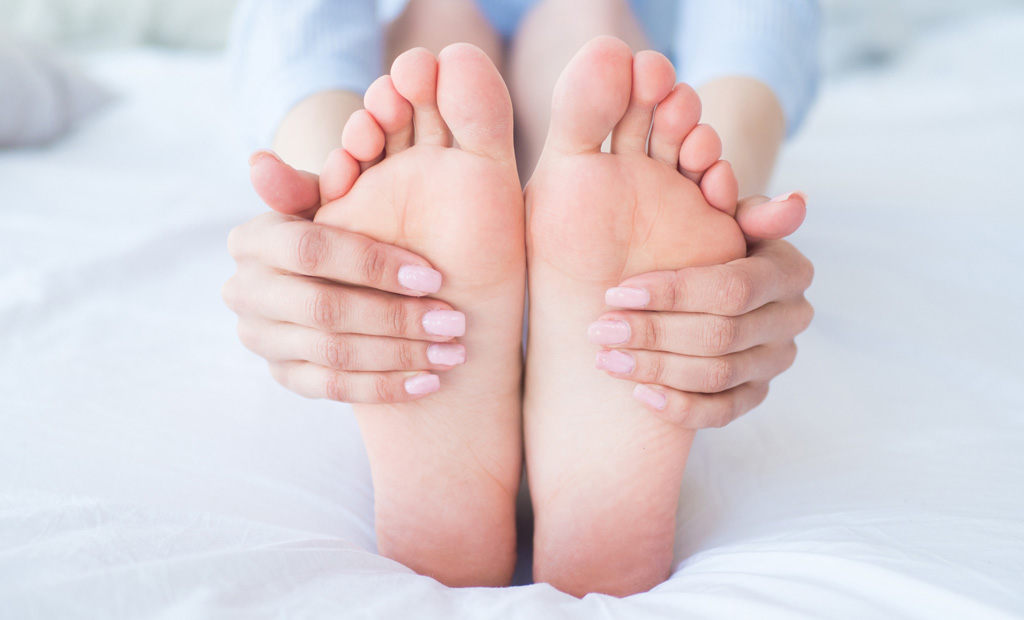
Our feet are remarkable, carrying us over thousands of miles throughout our lifetime. Because of the large load that we put on our feet, they are prone to various foot problems that may disrupt our quality of life. Fortunately, lots of these foot conditions are treatable if the right steps are taken.
Let’s explore some of the most common foot conditions and how we can treat them to keep our feet in the best shape:
- Plantar Fasciitis: The base of your foot has a connective tissue extending from your heel to your toes called the plantar fascia. This tissue can become inflamed and painful when overused during excessive walking, running, or jumping. Fortunately, most cases of plantar fasciitis can be treated conservatively using pain medication and the RICE method (Rest, Ice, Compression, and Elevation) at home. In more severe cases, physical therapy or corticosteroid injections may be recommended.
- Bunions: Bunions are bony projections found at the base of the big toe. Bunions are genetic and more common in women but they can also develop due to improper and narrow footwear. Bunions can be painful and change the shape of your foot causing discomfort when you walk. Depending on the severity of the issue, bunions can be treated with nonsurgical or surgical techniques. Nonsurgical treatments include medication, the RICE method, wearing wide shoes, or bunion pads. If the patient doesn’t respond to these conservative treatments, a bunionectomy is often recommended to remove the bunion and restore normal functioning.
- Corns: Another common foot condition, corns are a build-up of callused tissue caused by excess friction and pressure from a tight-fitting shoe. Corns can be painful and unsightly but are also very treatable. It is recommended to soak your feet in warm soapy water to soften the corn before filing it down with a pumice stone to remove the callused tissue. You can also avoid corns by selecting proper footwear and even wearing pads where you may be prone to calluses.
- Ingrown Toenail: An ingrown toenail occurs when the edge of the toenail begins to protrude into the soft tissue around the nail, causing pain, swelling, and even infections. Ingrown toenails can be caused by improper footwear, poor nail trimming, repeated foot trauma, or simply genetics. Usually, ingrown toenails are treated by soaking your foot in warm, soapy or salty water followed by wrapping the injured toe. If the toe becomes infected or shows no sign of healing, surgery to remove part of the toenail and growth plate is usually recommended.
- Arthritis of the Foot/Ankle: Arthritis is one of the most prevalent joint conditions, causing inflammation and pain in our joints due to wear and tear. Because our feet and ankles are so heavily relied upon, foot and ankle arthritis is very common. While arthritis can be difficult to treat, it is not impossible. Various treatments are available for arthritis of the foot or ankle including nonsurgical options like medications, corticosteroid injections, physical therapy, and braces. When the foot or ankle arthritis has started to severely impact your day-to-day life, surgery may be recommended to replace the injured joint.
Our feet are more delicate than we may think. Therefore it is important to prioritize your foot health in order to avoid these foot conditions. If you are concerned with your foot health or need treatment for any of these conditions, contact Dr. Dean for his expert advice today!
About the Author
Dr. Daniel Dean is a board-certified and fellowship-trained foot and ankle orthopaedic surgeon. He treats all musculoskeletal pathologies of the foot and ankle in adolescent and adult patients. He has specialized training in total ankle arthroplasty, sports injuries, flatfoot, complex fractures, and minimally invasive techniques in bunion correction.




